Muse
How might we make it easier for people to discover and share music they love, on the go?
Meet Muse.
Starting Point
We started our design thinking journey by focusing on the music industry: how could we improve the music streaming experience?
In order to assess the problems we needed to solve, we first wrote a discussion guide and conducted user interviews. This allowed us to synthesize the data into four main needs and challenges for a potential new product.
1. Sharing is Caring
People love to share music with their friends and followers

2. On the Go
People’s daily musical habits mostly revolve around commuting and walking around
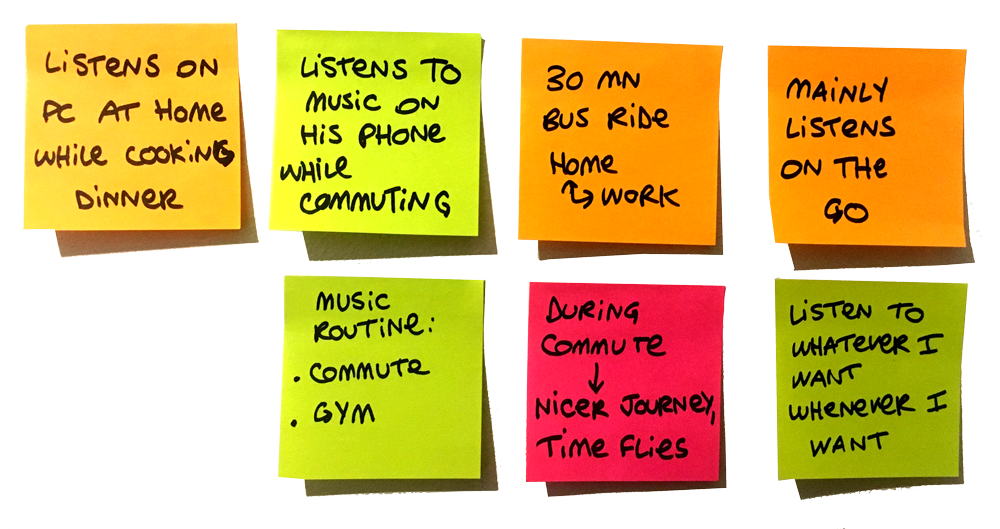
3. Hello, discovery
People crave novelty – they want to discover new tracks they will love

4. Playlists rule
Playlists killed the radio star – enough said.
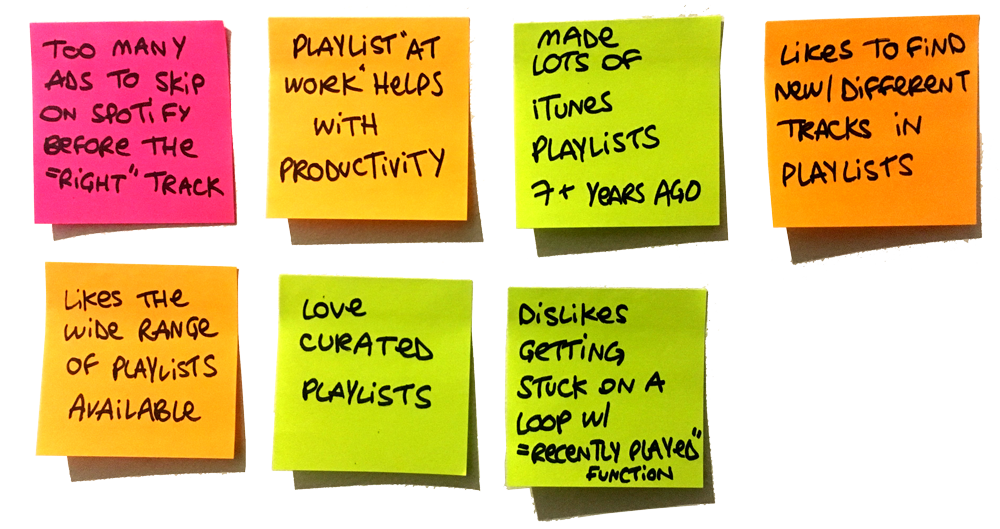
From there, we created relevant personas, and focused on a single problem statement.
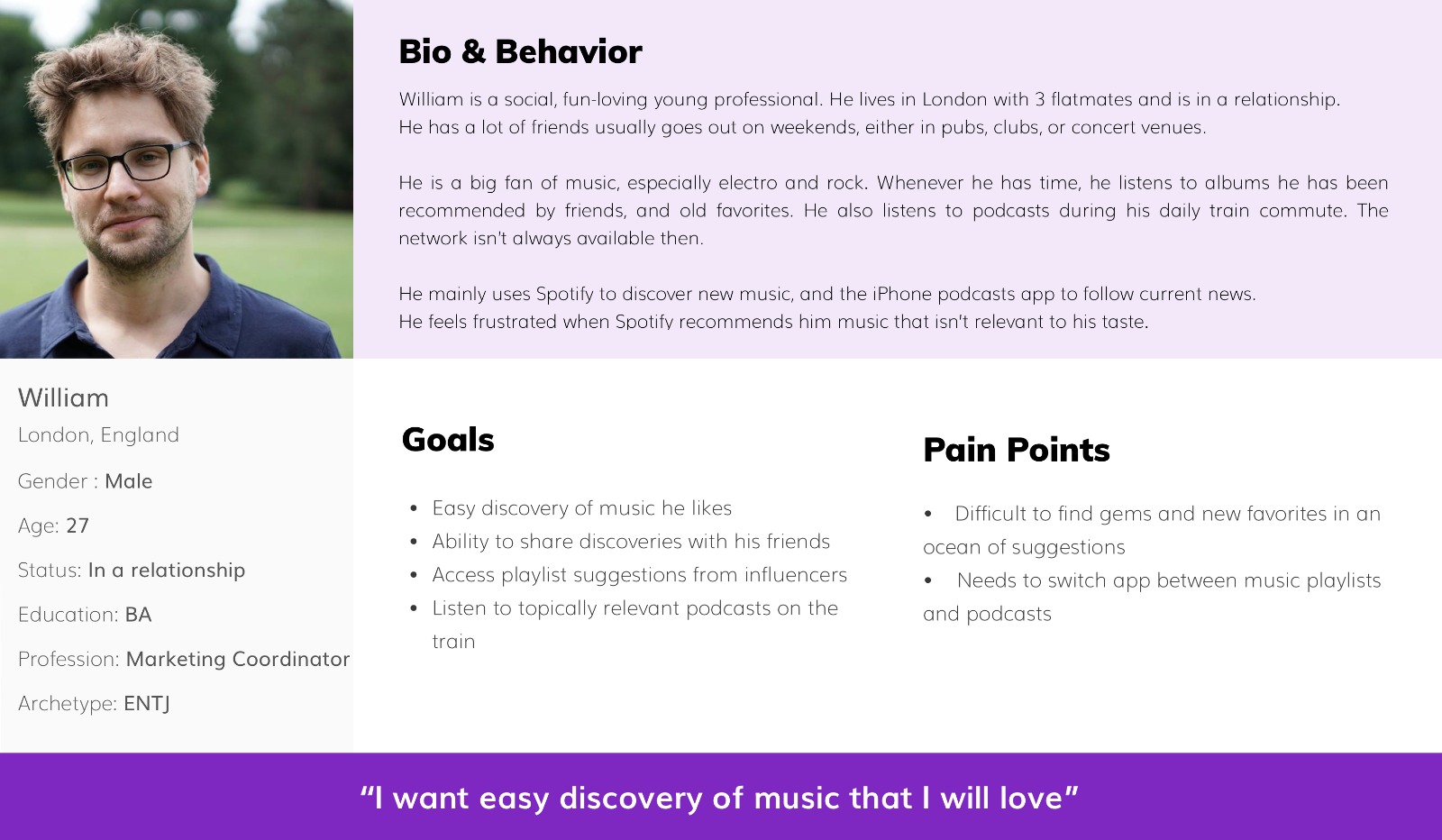
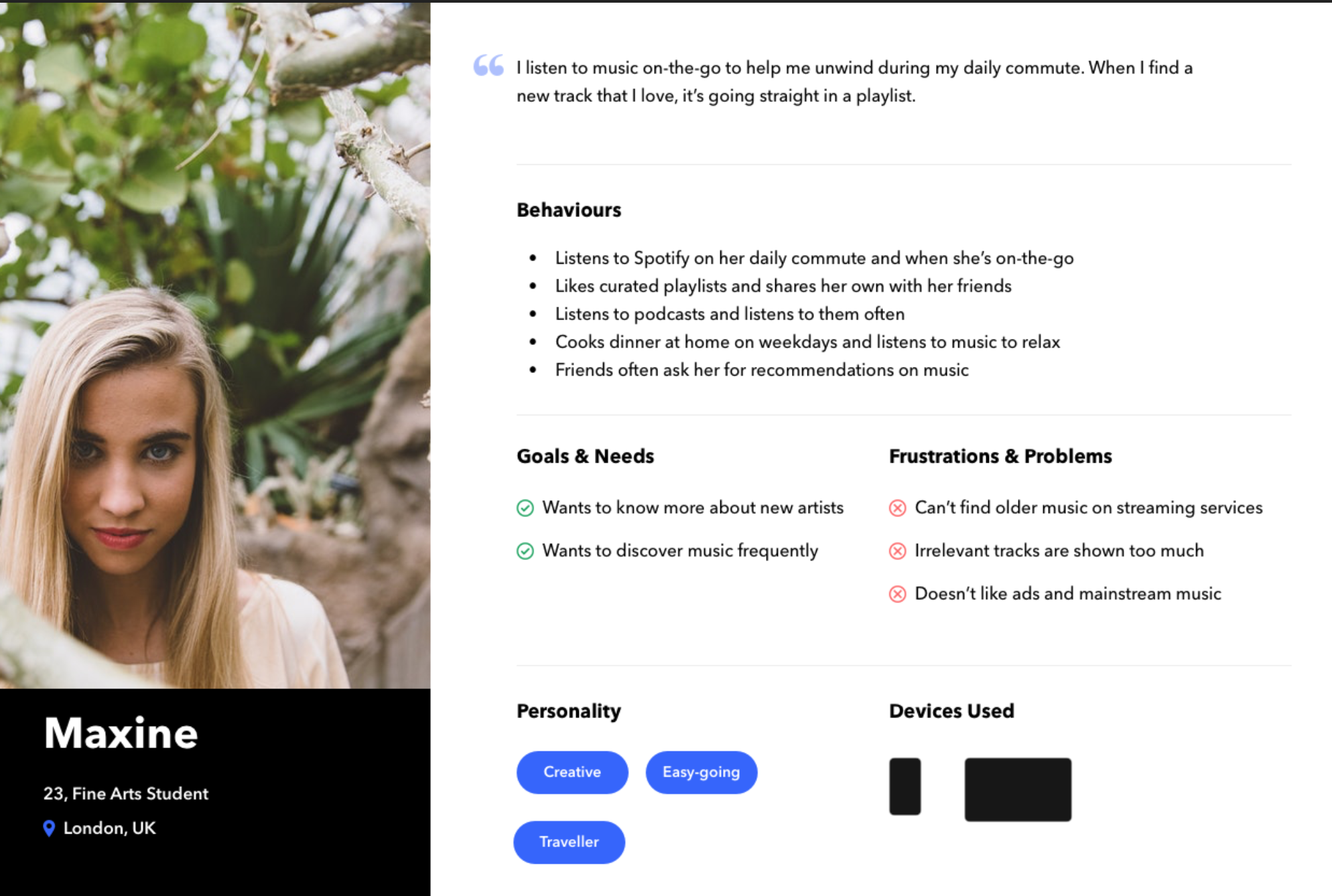
How might we make it easier for people to discover and share music they love, on the go?
Ideation
Full of enthusiasm and post-it notes, we started the ideation phase. Whilst the post-its quickly depleted, our enthusiasm didn’t.
Several brainstorms and two rounds of votes later, we tested the final ideas against 3 last key indicators.

The final idea solved all user needs and had the added bonus of taking the experience offline. Plus, great timing – we were running out of post-its.
Meet Muse. A real-life treasure quest for music sharers around the world.
The Concept
Muse users engage on a real-world treasure hunt in their surroundings, to pick up playlist capsules left behind by other users, in ways similar to Geocaching or Pokemon Go.
Capsules and users are rated in order to ascertain quality of content. Deals are struck with external partners (record labels, artists, festivals) to feature exclusive content and “golden tickets” or freebies to be collected by players.
This allows users to share playlists on-the-go and to discover new music. Perfect score!
Storyboards
We refined our idea through storyboarding, verifying once more it was relevant to our personas needs and their lifestyles.
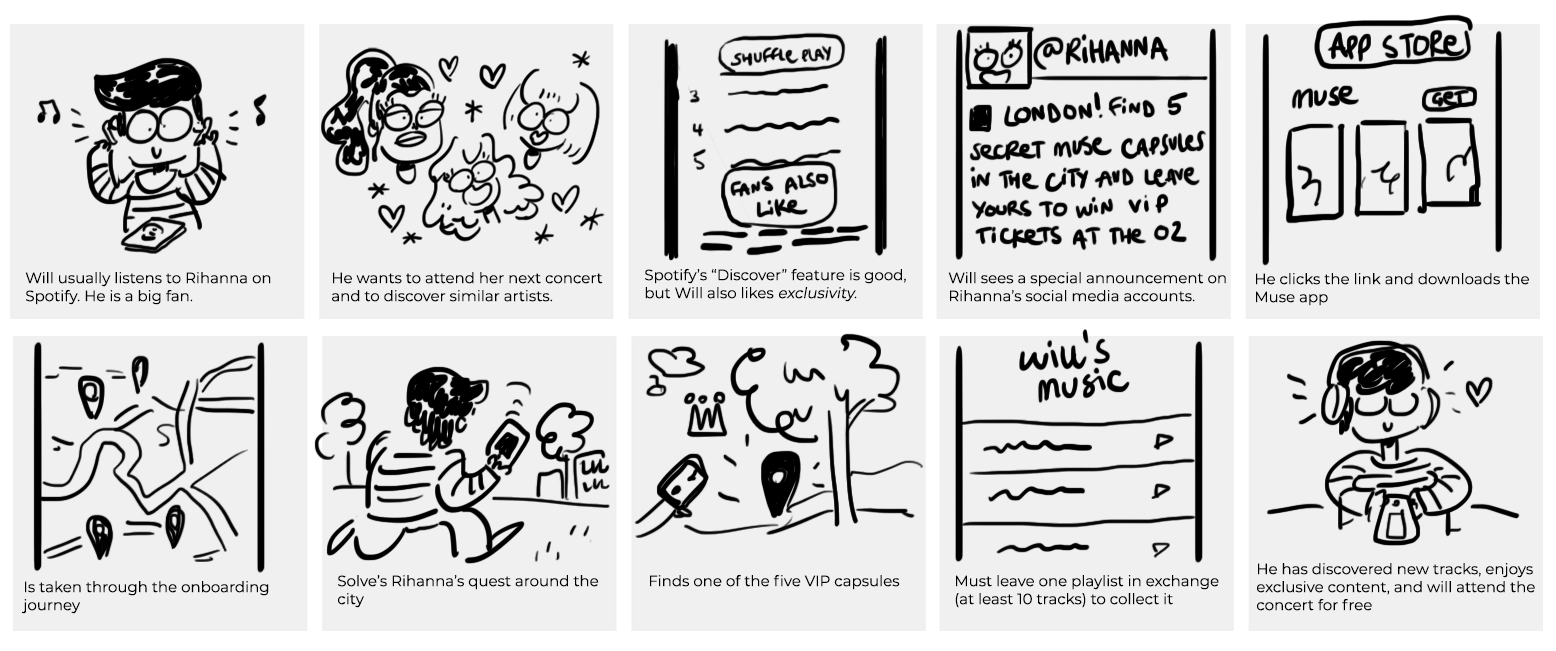


Clearing Assumptions
What next? We picked our concept apart again, to clear all assumptions about the product and its users.
Leap Of Faith Assumptions (LOPAs) – underlined below – needed to be tested in order to proceed with the project.
Assumptions about technology/product:
- Able to produce accurate music algorithms
- Able to upload playlists in physical places
- Able to support a wide user base
- Able to function even with slow data
Assumptions about customer behavior:
- Will be curious enough to engage with the app
- Will make a physical effort
- Will reach out to other players to meet offline
- Will use some free time to create playlists
We developed a hypothesis statement.
“If we create relevant incentives and a solid gamification system, we will see an increase in user sign-up and engagement”.
From that point, we designed low-fidelity prototypes to test the hypothesis.
Gamification & Prototyping
The bulk of the task then consisted in articulating gamification elements into one cohesive system : we wanted to reinforce behavior through positive consequences, to increase engagement.
Our challenge was to make users create new habits (through relevant, real-world incentives), and physically engage with the app.
We used low-fidelity prototyping to build the game architecture.
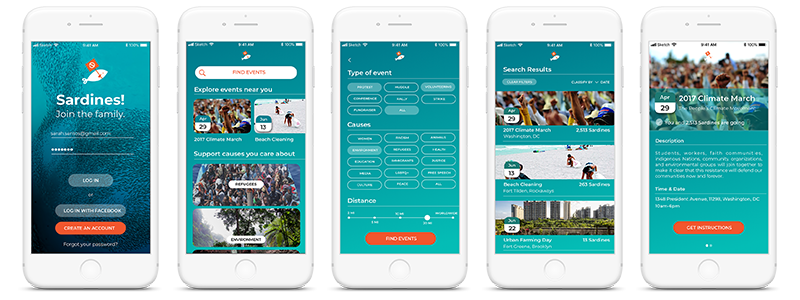

Some of our gamification strategies include:
- Epic Meaning, Humanity Hero, Thank You Economy: The need to be a part of something much bigger than just yourself. In Muse, users can leave their own carefully curated playlists behind for other community members to find. And they are awarded points for it, for a double dose of gratification.
- Social Influence, Crowning, Group Quests, Elitism: Collaboration with friends, competition with rival teams for popular playlists spots, groups and fandoms
- Health Gamification: More points to swap for playlists if more steps taken during the day
- Achievement Symbols, Collection Sets:Badges, leaderboards…that symbolize real life “achievement”
- Milestone Unlock, Boosters: Ability to take part in specific Artist’s quests for exclusive content
- Impatience and Scarcity: There aren’t unlimited special capsules, timer on special offers, certain playlists require more points
- The Alfred Effect: When users feel that a product or service is so personalized to their own needs that they can’t imagine using another service. As we find out that Muse is learning about our music tastes (through most played songs in Spotify) and leading you to relevant finds, we start to feel that this is “My Muse”, which understands and caters to you.